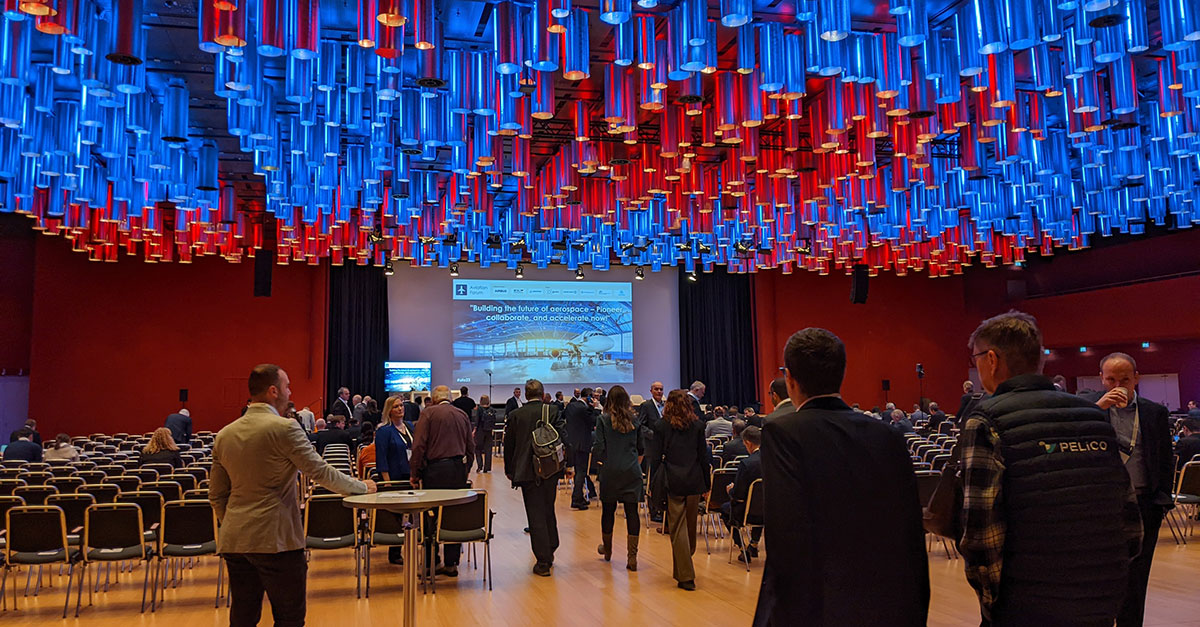How the Aerospace Conference PNAA flies into the future – and which role a “hole in the portfolio” plays
![]()
The weather was rainy, but information was hot: this year’s PNAA (Pacific Northwest Aerospace Association) Aerospace Conference in Lynnwod, WA, was again the “place to be” for aerospace decision takers who want to know towards which destination the industry is moving to: Located closely to the Boeing plants of Renton (production of all 737 family aircraft) and Everett (wide-body production, including 787), the PNAA had the biggest participation ever, with 500+ participants.
This year’s PNAA topic was “Flying into the future” and 180 member companies joined. They did a good job in including the “young ones without the grey hair”, as PNAA chairman Bill King announced.
In their race for market leadership for “bread and butter aircraft”, the “run rate” gap between Airbus and Boeing was one of the main topics: on the one side, the Boeing 737 run rate of currently 42 per month and as target 57 is lower than the Airbus numbers (with FALs in Europe, Americas and Asia), but generally in a similar ball park. If both major players really execute on their targets, some participants believed it will be difficult for the suppliers to keep up with this increase in cadence.
Kent Fisher, VP purchasing of Boeing Commercial Aircraft, highlighted well the achievements of the Supply Chain as a community, and acknowledged the 762 airplane deliveries in 2015 enabled by the suppliers. But Boeing also says that 48% of their workforce will retire by 2020 (6.000 to 9.000 engineers and technicians). Will they all be replaced?
Richard Aboulafia, the aerospace analyst from TEAL Group, predicts, that the civil aircraft “super cycle” of 12 years is coming to an end: The foreseen growth was questioned due to factors such as falling oil prices and rising interest rates.
One of the most discussed slides of the PNAA 2016 was presented by Simon Pickup, VP Marketing of Airbus showing a hole in the Boeing model portfolio, where the A321 NEO is heavily stealing market share from Boeing. This was promptly published in the next day’s Seattle Times, together with an announcement of Boeing cutting their workforce in 2016 due to extreme cost reduction requirements.
3D printing in Aerospace
A technological hot topic was the 3D printing presentation explaining that it means much more than just copying current classically produced parts: it allows weight reduction, formerly impossible geometric manufacturing results, and much cheaper design changes. Apparently, Airbus plans to produce 30 tons of material in 3D by 2018. For the digital supply chain this means ever more data exchange on the parts.
Interestingly enough, the Boeing representative in Renton said, that they could ramp up production right now, but the supply chain would be the one reason, why they did not do so. Also Alan Young, VP SC at Spirit Aerosystems, confirmed that 360 million USD at Spirit have been invested to support the ramp ups. Bruno Ferrand, CEO of Latecoere America, pointed out that supply chain integration is for him the way to achieve a sustainable growth.
Supply chain digitalization in Aerospace
Supply chain digitalization has also gained momentum. Since 2012, more than 1.200 suppliers have been actively aligning deliveries on the supply chain collaboration platform AirSupply, with approximately one dozen buying companies (i.e. Thales, Safran, Liebherr, Stelia, Premium Aerotech, EFW, Labinal,…) who in return use this same solution with their customers (i.e. Airbus, Dassault, Airbus Helicopters, ATR). This trend will continue also in the future.
The driving force of the German delegation was again Norbert Steinkemper, Niedersachsen Aviation, who was well recognized at the delegation reception by Jim Sheehan, Vice Chairman PNAA, and in the plenary session. Together with his counterpart from Southern Germany, Bert Stegkemper, Norbert is also driving the German aerospace supply chain excellence initiative “SCE” “Flying into the future” is challenge and promise in one – despite a hole in the portfolio.



